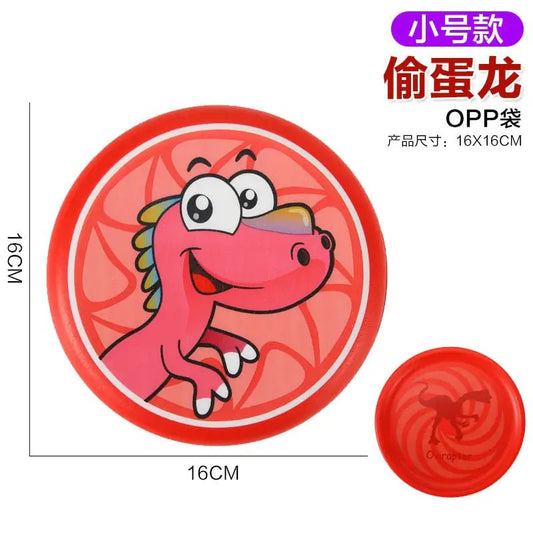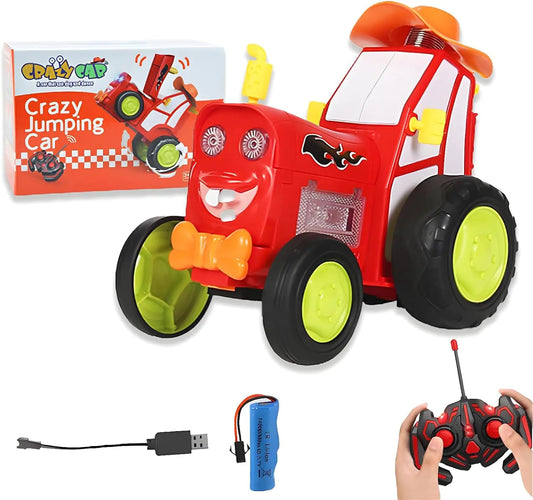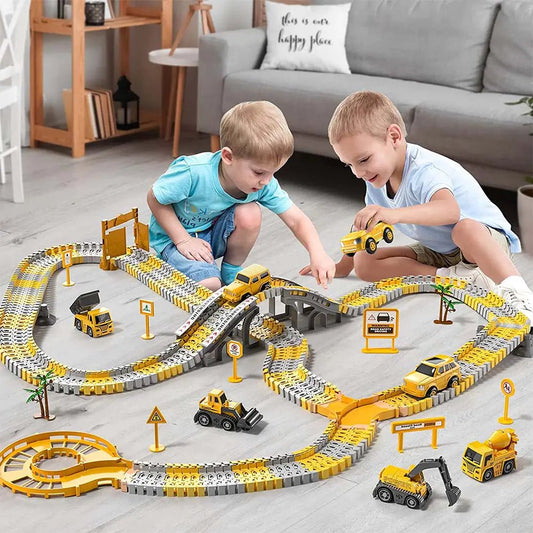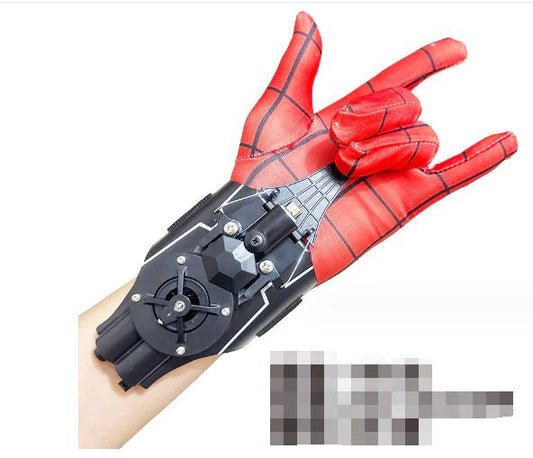
Best Sensory Toys: Unleashing Focus and Calm for Kids
anupma guptaAs a parent, you may have heard about the benefits of sensory toys in supporting child development and improving focus. These versatile tools can provide essential sensory input for children with ADHD, ASD, or even neurotypical children who struggle with concentration.
This comprehensive guide will delve into various sensory toys, such as fidget spinners and chewable silicone pencil toppers, that can help alleviate stress and anxiety. We'll also explore how weighted blankets calm nerves and improve sleep quality.

Moreover, we'll discuss the impact of non-optimal sensory processing abilities on learning outcomes and share strategies for selecting appropriate support based on individual student requirements. Furthermore, we will examine practical uses and benefits beyond childhood – including fidget items as stress-relief tools for working professionals.
Last, we'll address the debate surrounding sensory toy use in classroom settings and suggest ways to implement these supports without causing distractions. So join us as we unravel the world of the best sensory toys and their myriad applications in enhancing focus, calming nerves, and promoting overall well-being.
Sensory Toys for Focus and Calming
They also provide vital enrichment for neurotypical children by helping them practice using their senses and integrating the information their developing brains receive. This piece will examine the advantages of sensory toys for children with ADHD and ASD and the value of incorporating senses into growing brains.
Benefits of Sensory Toys for Kids with ADHD and ASD
Kids with Attention Deficit Hyperactivity Disorder (ADHD) or Autism Spectrum Disorder (ASD) often struggle to process sensory input from their environment effectively. This can lead to difficulties focusing on tasks or calming themselves when overwhelmed. Research has shown that providing these children with appropriate sensory toys can significantly improve attention span, reduce anxiety levels, promote self-regulation skills, and enhance overall quality of life.
- Fidget toys: These tactile objects, like fidget spinners, require hand-eye coordination, which helps kids stay focused while satisfying their need for movement.
- Chew toys: For those who seek oral stimulation due to hypersensitivity or hyposensitivity issues within the mouth area, chewable silicone pencil toppers or bars offer a safe outlet without causing damage to teeth/gums over time.
- Sensory integration activities: Engaging in structured play involving various materials allows young minds an opportunity not only to explore different sensations but also to learn how best to navigate/manage these experiences moving forward throughout childhood and into adulthood.
The Importance of Sensory Integration in Child Development
Sensory integration is how our brains organize and interpret sensory input from various sources, allowing us to respond appropriately to our environment. Sensory integration is essential for a child's development, enabling them to process information and refine motor skills effectively. Studies have shown that early intervention with sensory toys can significantly improve sensory processing abilities among young children who struggle with this development aspect.
- Enhanced motor skills: Sensory toys like stress balls or fidget spinners help kids develop fine/gross motor control while improving hand-eye coordination.
- Better emotional regulation: By providing an outlet for excess energy/stress levels experienced throughout daily routines, these types of resources enable youngsters to gain better understanding/control over their own feelings/emotions moving forward into adulthood years later down the line as well.
Incorporating sensory toys into your child's daily routine can provide them with invaluable support for healthy cognitive, emotional, and physical development. Whether they are struggling with ADHD or ASD symptoms or need additional stimulation during playtime activities - investing time/resources now will undoubtedly pay off long-term dividends when considering overall quality-of-life improvements achieved through consistent use/application across all age groups involved here today. Why not immediately consider incorporating one (or more) of the abovementioned options within home/school settings? Your little ones will indeed thank you later on down the road.
Sensory toys can be an excellent tool for helping children with ADHD and ASD focus and stay calm. Considering their potential to help kids manage stress, let's examine the various sensory toys available.

Best Types of Sensory Toys
Many sensory toys are available to meet different needs and preferences. These can range from tactile activities like fidget spinners or stress balls to chewable silicone pencil toppers or bars explicitly designed for oral stimulation. This section will explore some popular sensory toys and their benefits.
Fidget Spinners as an Alternative Stress-Relief Tool
The fidget spinner craze took the world by storm a few years ago, with children and adults using these small spinning devices to relieve stress, improve focus, or pass the time. Fidget spinners require users to apply slight pressure on either side of its center axis while rotating rapidly around this fixed point, thus creating sensations similar to those experienced during other self-soothing activities (e.g., rocking back and forth gently). Research has shown that fidget spinners can help reduce anxiety levels among individuals diagnosed with ADHD/ASD - making them ideal tools to use within classroom settings where distractions abound.
Chewable Silicone Pencil Toppers, Bars, or Rings
Chewable silicone pencil toppers provide a safe alternative for children seeking oral stimulation due to sensory processing challenges or anxiety-related behaviors. These items are typically made from medical-grade silicone material that is durable yet soft enough not to cause damage to teeth/gums upon repeated usage over extended periods. Moreover, many manufacturers offer various shapes/textures/color options based on personal preferences/preferences regarding individual needs specific to each user involved directly throughout selecting appropriate product type(s) to purchase online/in-store locations nationwide across the USA today.
Sensory playthings offer an excellent means to help kids with sensory processing issues and can be used in different methods for various activities. Weighted blankets and stuffed animals are also beneficial tools that can assist in calming anxiety; let's explore how these items work and the right size or weight needed for your child.
Best Weighted Blankets & Stuffed Animals
For kids experiencing sensory integration difficulties, weighted blankets or stuffed animals can help calm anxiety and promote relaxation or sleep. These therapeutic tools have been proven effective in managing stress levels among children who struggle with self-regulation due to developmental challenges such as autism spectrum disorder (ASD) and attention deficit hyperactivity disorder (ADHD).

How Weighted Blankets Work on Calming Anxiety
Weighted blankets are designed to provide deep pressure stimulation, miming the feeling of being hugged or swaddled. The deep pressure stimulation of weighted blankets triggers the production of serotonin and melatonin, neurotransmitters responsible for regulating mood and sleep cycles, respectively, thus resulting in reduced anxiety levels and improved emotional health. As a result, weighted blankets can help reduce anxiety levels and improve overall emotional well-being.
- Sensory input: The evenly distributed weight across the blanket provides consistent sensory information that helps soothe overstimulated senses.
- Anxiety reduction: Deep pressure stimulation promotes feelings of safety and security, reducing cortisol levels - the hormone associated with stress - while increasing serotonin production.
- Better sleep quality: Weighted blankets may improve sleep quality for children struggling with insomnia related to sensory processing disorders by promoting relaxation through increased melatonin production.
Choosing the Right Size and Weight for Your Child's Needs
When selecting a weighted blanket or stuffed animal for your child, it is essential to consider their age, weight, and individual sensory preferences. The general rule of thumb is that the blanket weighs approximately 10% of the child's body weight plus one pound. However, always consult with an occupational therapist or pediatrician before introducing a weighted product into your child's routine.

- Age: Weighted blankets are not recommended for children under two years old due to potential safety risks such as suffocation hazards.
- Weight: Ensure the chosen blanket falls within the appropriate range (10% of body weight +1 lb) to provide optimal pressure without causing discomfort or posing safety concerns.
- Sensory preferences: Consider factors like fabric texture and color when choosing a weighted item - some children may prefer soft materials like fleece, while others might find smooth fabrics more soothing. Additionally, opt for calming colors such as blue or green instead of bright hues that could be overstimulating.
In addition to traditional blankets, various weighted products are available, including vests and lap pads explicitly designed for use during seated activities like schoolwork. These alternatives can provide similar benefits in anxiety reduction and improved focus while being more portable than full-sized blankets - making them ideal options for classroom settings where space may be limited.
Beyond improving emotional well-being among children with sensory processing challenges, research suggests that weighted items can also benefit neurotypical individuals by promoting relaxation and reducing stress levels. As parents living in today's fast-paced world, it is essential to provide our children with the tools they need to navigate their environments successfully - weighted blankets or stuffed animals can be valuable additions to any child's sensory toolkit.
Weighted coverings and cuddly toys can give a soothing effect to kids who experience anxiety, assisting them in calming down and concentrating on their work. Improving school performance through sensory processing support is the next step in providing individualized care that meets each student's unique needs.Improving School Performance through Sensory Processing Support
Sensory toys can be advantageous for those with sensory processing issues but also provide a means to advance academic performance in all students. A study on Dutch second graders found that 29-36% had non-optimal sensory processing abilities; these children may need special tools like sensory toys to concentrate better and improve school performance. By addressing these specific needs early on, parents can set their kids up for success throughout their academic journey.
The impact of non-optimal sensory processing abilities on learning outcomes
Children who struggle with sensory integration often have difficulty focusing and engaging in classroom activities. This lack of focus can lead to poor academic performance and lower self-esteem as the child falls behind their peers. Behavioral issues, such as acting out or withdrawing from social interactions, may result from a lack of focus due to sensory integration difficulties.

Incorporating sensory toys into a child's daily routine can give them the necessary sensory input, helping them stay focused during lessons and complete tasks more efficiently. For example, fidget spinners require hand-eye coordination, which allows students develop fine motor skills while simultaneously providing a calming effect.
Selecting appropriate support strategies based on individual student requirements
To effectively address each child's unique needs, it is essential to consider various factors when selecting appropriate support strategies:
- Evaluation: Consultation with an occupational therapist or other professionals experienced in assessing sensory processing challenges is crucial for determining the most suitable interventions.
- Type of toy: Different sensory toys cater to various needs and preferences. For example, fidget spinners or stress balls can help with tactile stimulation, while chew toys provide oral sensory input.
- Environment: The classroom setting should be conducive to learning for all students. Teachers may need to make adjustments such as reducing background noise or providing designated quiet spaces for children who struggle with sensory processing.
Incorporating these support strategies into the school environment benefits children with sensory processing difficulties and fosters a more inclusive and supportive atmosphere for all students.
Sensory Toys in Classroom Settings
Despite the numerous benefits of using sensory toys in classrooms worldwide, some teachers have decided against allowing them into schools because they may distract students from concentrating on lessons. Nevertheless, therapists continue to recommend these resources as valuable aids for children who struggle with sensory processing challenges.
The debate surrounding sensory toy use in educational settings
Critics argue that introducing items like fidget spinners into classrooms could cause distractions rather than improve focus. However, many educators and occupational therapists believe that when used appropriately, these tools can significantly enhance concentration and overall academic performance among young children struggling with attention issues related to their developing brains' ability to process information effectively.
Strategies for implementing sensory supports without causing distractions
To ensure that incorporating sensory toys does not disrupt classroom activities, consider the following guidelines:
- Create clear rules: Establish specific guidelines regarding when and how students can use their chosen devices during class (e.g., only during independent work).
- Select appropriate options: Choose sensory toys that are quiet and unobtrusive, such as stress balls or fidget rings, rather than those that produce noise or require excessive movement.
- Monitor usage: Teachers should monitor students using sensory tools to ensure they do not become a distraction for others. Adjustments can be made to individual students' use of these devices.
By implementing these strategies in classroom settings, educators can effectively integrate sensory supports without causing disruptions while promoting academic success among all students.
By implementing appropriate sensory processing support strategies in the classroom, we can help to improve student performance and reduce stress. Additionally, these same strategies can be used beyond childhood for adults who may benefit from environmental adjustments or fidget items as a form of stress relief.
Practical Uses & Benefits Beyond Childhood
In addition to benefiting young minds, fidget items also have practical uses for adults. They can help individuals stay focused during work tasks while calming themselves down when stressed out. Furthermore, psychology research shows that people fine-tune their environments according to the level of stimulation they require. Hence, sensory toys could assist both kids and adults in staying focused throughout daily routines.

Fidget Items as Stress-Relief Tools for Working Professionals
The popularity of fidget spinners has led many working professionals to explore other types of sensory toys explicitly designed for adult use. One example is the stress ball, which provides a simple yet effective way to relieve tension and anxiety during busy workdays. By squeezing or manipulating these soft objects, users can channel their nervous energy into a physical activity that does not distract them from important tasks.
Another popular option among office workers is the fidget spinner craze, which requires hand-eye coordination and concentration on continuously spinning the device. This repetitive motion helps calm nerves by providing an outlet for excess energy without causing significant disruptions in focus or productivity levels.
Environmental Adjustments to Support Optimal Focus and Productivity
Apart from using sensory tools like fidget spinners or stress balls, several environmental adjustments can be made within workplaces or homes to promote optimal focus and productivity levels among both neurotypical children and adults with sensory processing challenges:
- Noise reduction: Minimizing background noise by using noise-canceling headphones or creating designated quiet zones can help individuals concentrate better on their tasks.
- Lighting adjustments: Adjusting the brightness and color temperature of lighting in workspaces can significantly impact mood, focus, and overall well-being. Consider investing in adjustable desk lamps or smart bulbs for personalized settings.
- Ergonomic furniture: Ensuring proper seating arrangements with ergonomic chairs and desks can reduce physical discomfort caused by poor posture, often leading to decreased concentration levels over time.
Incorporating these environmental changes and sensory tools, such as sensory toys, may provide the necessary support for optimal focus and productivity among children and adults with sensory processing challenges.To further support parents in selecting appropriate sensory toys for their children's requirements, consult with professionals such as occupational therapists who specialize in addressing sensory processing disorder (SPD) issues. Additionally, explore online resources like blogs explicitly dedicated to discussing various types of therapeutic aids available today.
Sensory toys play an essential role in helping many young learners overcome obstacles associated with SPD by providing vital input needed for proper brain development. However, careful consideration must always remain at the forefront whenever introducing new materials within educational environments. Hence, each student receives optimal benefits without causing undue distraction amongst peers trying hard to concentrate during lessons.

What is the impact of sensory toys?
Sensory toys significantly impact children's development, particularly those with special needs. They help improve motor skills, cognitive function, and emotional regulation by stimulating various senses. Sensory toys can also reduce anxiety and stress in children and adults.
What are the benefits of sensory toys?
The benefits of sensory toys include enhanced focus, improved hand-eye coordination, better emotional regulation, reduced anxiety and stress levels, increased tactile awareness, support for individuals with autism or ADHD, and overall improvement in learning capabilities.
What is the science behind sensory toys?
The science behind sensory toys lies in their ability to stimulate different senses, such as touch (tactile), sight (visual), sound (auditory), smell (olfactory), or movement (vestibular). This multisensory stimulation helps activate various brain parts responsible for processing information effectively while promoting neural connections essential for healthy development.
What makes sensory toys vital in today's world?
Sensory integration has become crucial for maintaining focus in today's fast-paced world of abundant distractions. Sensory toys provide an effective way to engage multiple senses simultaneously, enhancing concentration and promoting relaxation through self-regulation techniques that alleviate stressors commonly experienced by modern-day individuals.
In conclusion, sensory toys are a great way to help individuals with different needs, including those with sensory processing disorders. Fidget spinners can improve hand-eye coordination, while chewable silicone pencil toppers or bars can provide oral stimulation for those who need it. Weighted items offer deep pressure stimulation that has been proven beneficial for many individuals.
Using sensory toys in the classroom can aid concentration and performance, but controversies surround their use. However, occupational therapists believe these tools are essential for people with sensory processing disorders.
If you're looking for high-quality sensory toys, check out HomeKartz's collection. You can be sure to locate something that will fit your requirements from the extensive selection available at HomeKartz!












